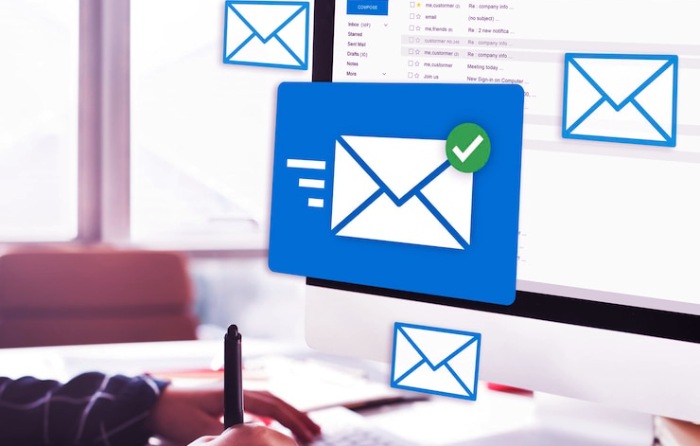- Prevent Email Spoofing: It verifies the true source of the email.
- Maintain Email Integrity: It ensures that the content of the email remains unchanged.
- The DKIM record is present in your DNS.
- The formatting of the record is accurate.
- The public key is accessible for validation.
- The combination of selector and domain is valid.
- Syntax mistakes
- Absent records
- DNS propagation problems
- Outdated or incorrect keys
- MXToolbox DKIM Lookup
- DKIMCore
- EasyDMARC DKIM Checker
DKIM Record Check: Ensure Email Authenticity
With Quick Verification
With Quick Verification
Email continues to be a vital means of communication for companies, yet it frequently serves as a pathway for cyber risks such as phishing and spoofing. To maintain the integrity of emails and provide assurance to recipients regarding the authenticity of the sender, DomainKeys Identified Mail (DKIM) is essential. Conducting a DKIM record check is a fundamental process for confirming that your domain is secure and that your emails are genuine.
This article will delve into the functioning of DKIM, highlight the significance of verifying your DKIM record, and guide you through the process of performing a DKIM record check for dependable email authentication.
What is DKIM, and Why Does It Matter?
Understanding DomainKeys Identified Mail (DKIM)
DKIM, or DomainKeys Identified Mail, is a technique used for authenticating emails, allowing recipients to confirm that a message genuinely comes from an approved domain and has not been modified during transmission. This is accomplished by appending a digital signature to each outgoing email, which can be verified with a public key that is published in the sender's domain DNS (Domain Name System).
The objectives of DKIM are twofold:
DKIM operates alongside SPF (Sender Policy Framework) and DMARC (Domain-based Message Authentication, Reporting, and Conformance) to create a robust framework for email authentication.
Importance of DKIM Record Checks
Verifying Correct DKIM Setup
Incorrectly set up DKIM records may result in your genuine emails being marked as spam or completely denied. Conducting a DKIM record verification confirms that:
Routine checks of your DKIM settings can help detect any misconfigurations or mistakes before they affect your ability to deliver emails effectively.

Protecting Your Domain Reputation
Cybercriminals frequently impersonate authentic domains to execute phishing schemes. If your domain lacks DKIM, it becomes a vulnerable target. Conducting a DKIM record check ensures that your domain is adequately safeguarded, reducing the likelihood of being exploited in these deceptive practices and preserving your domain's standing. Delve into this webpage to discover more information.
How to Perform a DKIM Record Check
Step 1: Identify the DKIM Selector
The DKIM selector is a specific string that helps find the public key within the DNS. This selector is part of the "DKIM-Signature" header found in your email. To carry out a DKIM verification, you must have both the selector and the associated domain.
For instance, when your selector is set to mail and your domain name is example.com, you would find your public key published at:
mail._domainkey.example.com.
Step 2: Use a DKIM Lookup Tool
There are numerous web-based tools available that enable you to swiftly verify your DKIM records. These resources pull the public key from the DNS and examine it for:
Among the well-known DKIM record checking tools are:

Step 3: Interpret the Results
An effective DKIM verification process should yield a legitimate public key and verify that the DKIM signature is properly structured. In case of any issues, the tool generally offers recommendations for resolution, which may include fixing syntax errors, refreshing the record, or addressing DNS problems.
Best Practices for DKIM Record Management
Use Strong Keys and Rotate Them Periodically
To achieve robust encryption, it's advisable to utilize keys that are at least 1024 bits in length, with a preference for 2048-bit keys. Additionally, frequently updating your keys can improve security by reducing the time frame during which a compromised key may be exploited.
Monitor DKIM Status Continuously
Rather than depending on occasional manual inspections, think about incorporating DKIM monitoring into your security processes. Numerous email security solutions provide ongoing DKIM monitoring and will notify you if any problems occur.
Combine DKIM with SPF and DMARC
DKIM is most effective when integrated into a comprehensive email authentication approach. When used in conjunction with SPF and DMARC, it enhances the credibility of an email domain, minimizes the chances of spoofing, and boosts delivery success rates.